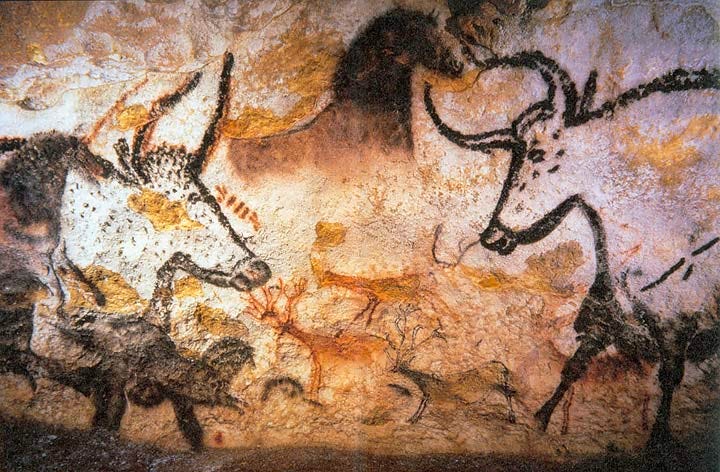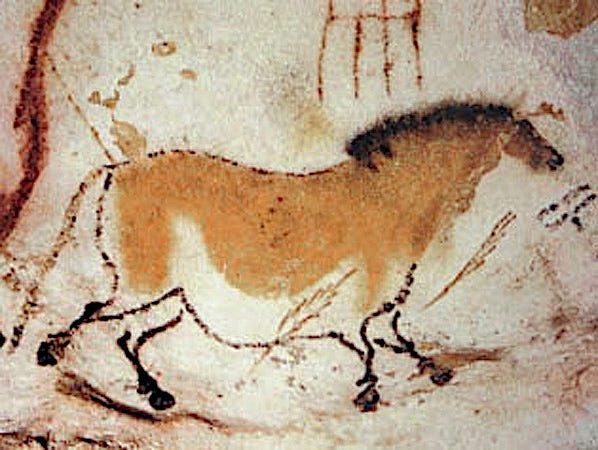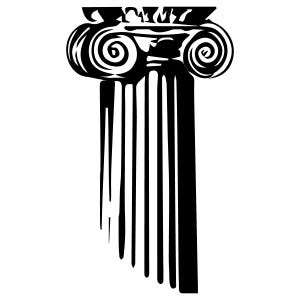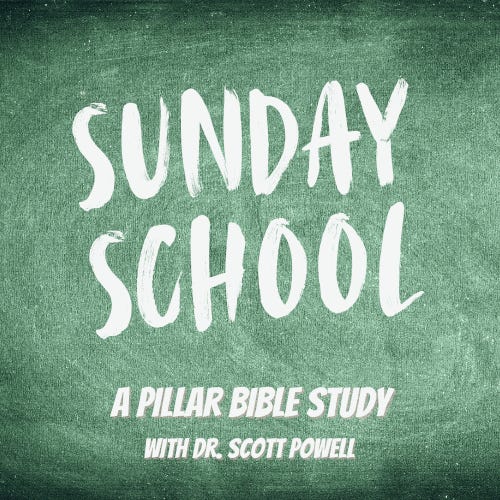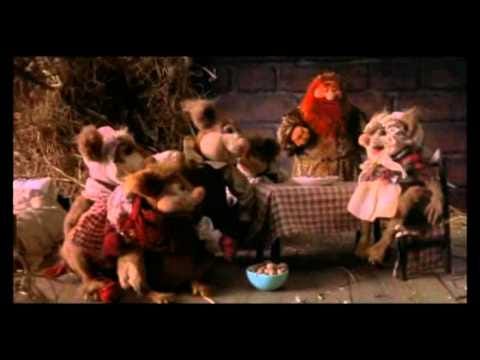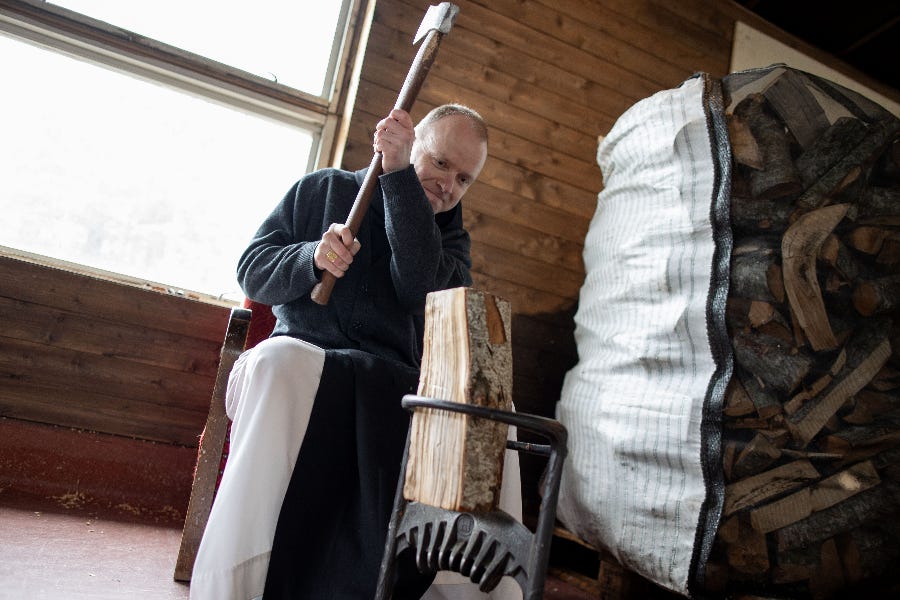Hey everybody,
Today is Tuesday of the 23rd week of ordinary time, and you’re reading the Tuesday Pillar Post.
On this date 83 years ago — Sept. 12, 1940 — three French teenagers took a walk in the woods, near their home in southwestern France.
It’s possible the boys had a dog with them, and it’s possible the dog was named Robot. It’s even possible that Robot, their dog, fell into a hole.
It’s hard to tell what’s true about the dog because that day, Sept. 12, 1940, was special. It was so special that the boys were asked to recount what happened to them dozens of times, and — over time — the story grew into legend, as it sometimes does when teenagers are asked to talk about an important thing.
Because they probably wanted to impress French girls, they seemed to embellish their stories, bit by bit, and so the facts — at least about Robot — are lost to history.
But what’s certain is that the teenagers found a hole in the woods. They remembered a local legend, about a secret tunnel that would lead to buried treasure under a local manor house. So the boys stood on the edge of the hole and dropped in rocks, trying to get a sense of how deep it would go.
Eventually, they climbed into the hole, and then into a kind of crevice between rocks.
They descended some 50 feet, and then they fell into a cave.
There was no store of gold. But there was a hidden treasure.
On the walls of that cave, the boys discovered the most extraordinary paintings they’d ever seen. One said the paintings looked like living animals — moving across the cave walls.
They were awed.
For a day or two, the boys, being boys, told people about the cave, and stood at the entrance charging admission. But soon their schoolmaster came to see the fuss. When he went into the hole, he told the boys they had discovered something beyond belief — the paintings were prehistoric; they dated as far back as 15,000 B.C.
Eventually, researchers documented more than 6,000 individual figures painted on the walls, covering thousands of square feet across a system of caves. Anthropologists and paleontologists descended on the Lascaux caves, which were eventually declared a World Heritage Site.
Of course, the caves are now closed to the public — too many people visiting meant that the moisture of their breath put condensation on the walls, and the paintings began to deteriorate. Expensive dehumidifiers and monitors now keep the paintings as pristine as possible — though no one is actually permitted to go in and see the real McCoy.
(A replica is available, made with paint of the same composition and everything.)
I suppose it’s for the best that the paintings are preserved — they are some of the earliest records of human civilization and culture.
But still, I like to think their very best moments as art were in those few days 83 years ago, when anyone could see them, if they had a few francs to pay the enterprising teenagers standing over a weird hole in the woods.
The News
Let’s start with this.
Danlami was 25 years old.
While the parish pastor and a newly ordained parochial vicar escaped the fire, Danlami did not.
It is not immediately clear who was responsible for the attack — but local sources say they believe the gang intended to kidnap the parish pastor and hold him for ransom.
And while an attack on the St. Raphael Parish compound lasted more than an hour, with gang members shooting guns into the rectory compound, police did not arrive — even while a police checkpoint was only a mile from the parish rectory.
Bishop Julius Kundi of Kafanchan spoke with The Pillar after the attack. And in a statement he released soon after, he called for praise of almighty God.
“Let everyone hear our songs of praise and thanksgivings…” he said.
“Let us prove to our enemies with all their arsenals that they have failed again.”
Let everyone hear our songs of praise and thanksgiving.
Amen.
—
The Pillar broke yesterday the latest news on the apostolic visitation of Texas’ Bishop Joseph Strickland: Pope Francis met with Vatican officials Saturday, and has been advised to request Strickland’s resignation.
The statement came after a senior adviser to Ukrainian president Volodymyr Zelenskyy accused the Vatican Bank of harboring Russian funds, despite international sanctions.
In fact, the senior adviser charged that Pope Francis “is pro-Russian” and “not credible,” because “Russia has a large investment in the Vatican Bank, and this probably influences the pope's position.”
Well, a lot of Ukrainians — including the Ukrainian Greek Catholic Church’s bishops — have expressed concern about Pope Francis’ rhetoric regarding the war.
But whatever you think of the pope’s geopolitics, the Vatican’s commercial bank is very keen to explain that it is not violating international sanctions on Russian cash.
Since the bank has worked hard to overcome its history with money launderers, you can see why IOR officials are keen to push back on the rumors that it’s now doing illicit business with Boris and Natasha.
If you want to read more about that, you can do it right here.
In response, the Holy See has asked Bishop Joseph Bonnemain of Chur to conduct a preliminary investigation into those charges, and a report will be sent to the Holy See before the end of the year.
Meanwhile, Switzerland has just seen the release of an independent investigation, commissioned by the bishops’ conference, into the history of clerical sexual abuse in the country.
Between the historical report and the present allegations facing bishops, the Church in Switzerland is plunging into a very difficult time.
If you would, take a minute to pray for the Catholics of Switzerland, and, especially, for those who are victims of clerical sexual abuse.
And then read the latest here.
But the most interesting part of the case emerged in court documents obtained by The Pillar, which we reported on this morning: According to police testimony, the priest lived for nine years with a parish employee, rather than in his rectory, apparently with no intervention from the Diocese of Springfield.
When he was ordered to move out of her home last year, the priest filled two storage units with power tools, appliances, and a riding lawnmower, all of which he had bought with parish credit cards, and stored at the woman’s house.
Now, it is not entirely inconceivable to me that a priest could maintain a secret domicile for nine years — I can see how it might go mostly unnoticed, or how the priest might tell a couple of lies to parish secretaries, and get away with it.
But the case in Massachusetts points to the ways that clerical financial misconduct can often be correlated to other serious misconduct.
And indeed, the reason for publishing stories like this is because financial misconduct is an often unaddressed and underappreciated phenomenon in the life of the Church, but it is both problematic in its own right, and also serves often as a kind of gateway crime.
While some dioceses have expansive internal audit procedures aimed at curtailing theft and embezzlement, others have very little in the way of procedure. But without good policies, the patrimony of the Church can too easily walk out the door, often under the bishop’s nose.
In the report on Fr. Gorny, we talked with an expert in forensic accounting — a former IRS investigator with a lot of experience with institutions and financial misconduct.
That expert — Professor Rob Warren of Radford University — offered to The Pillar some policy suggestions that might better curtail financial misconduct among clerics.
Are they all feasible ideas? Would they stop embezzlement?
I’m not sure.
But they’re worth having a conversation about — because the better the problem of financial misconduct is understood in the life of the Church, especially by bishops, the more likely it is to be addressed.
Which is why we’ll continue to cover the issue thoroughly.
For the moment, read this cautionary tale from Massachusetts, right here.
—
Finally, I thought I’d call your attention to the powerful words of Pope St. John Paul II, spoken 22 years ago, on Sept. 12, 2001, and addressed especially to the American people, reeling from the attacks of the day prior:
“Yesterday was a dark day in the history of humanity, a terrible affront to human dignity. After receiving the news, I followed with intense concern the developing situation, with heartfelt prayers to the Lord. How is it possible to commit acts of such savage cruelty? The human heart has depths from which schemes of unheard-of ferocity sometimes emerge, capable of destroying in a moment the normal daily life of a people. But faith comes to our aid at these times when words seem to fail. Christ’s word is the only one that can give a response to the questions which trouble our spirit. Even if the forces of darkness appear to prevail, those who believe in God know that evil and death do not have the final say. Christian hope is based on this truth; at this time our prayerful trust draws strength from it.”
“I entrust to the mercy of the Most High the helpless victims of this tragedy, for whom I offered Mass this morning, invoking upon them eternal rest. May God give courage to the survivors; may he sustain the rescue-workers and the many volunteers who are presently making an enormous effort to cope with such an immense emergency. I ask you, dear brothers and sisters, to join me in prayer for them. Let us beg the Lord that the spiral of hatred and violence will not prevail. May the Blessed Virgin, Mother of Mercy, fill the hearts of all with wise thoughts and peaceful intentions.”
John Paul II was prophetic in that moment, and, of course, prophetic in the months after — stern when necessary, and courageously warning the U.S. about the danger of its 9/11 response in the Middle East.
“War itself is an attack on human life, since it brings in its wake suffering and death. The battle for peace is always a battle for life!” the late pope warned in January 2003, as the U.S. prepared for its invasion of Iraq.
All of that is an important part of JPII’s legacy, and should not be forgotten.
But for the moment, I’m struck by the faith embodied in this statement: “Christ’s word is the only one that can give a response to the questions which trouble our spirit.”
From some, that might be taken as a bromide, a trite bit of spirituality, “Chicken Soup for the post-9/11 Soul.”
But that’s not the case for JPII.
When he said at Camden Yards, for example, in 1995, that “Jesus Christ is the answer to the question posed by every human life,” I suspect most of us know that the late pope reached the answer — Jesus Christ — through long suffering and serious contemplation.
And I think it’s worth noting that the pope conveyed those messages to Americans, especially. Christ and Christ alone answers the existential questions that plague every human heart — but he kept saying it to America.
What’s the lesson?
Perhaps the pontiff wanted us to turn more closely to Jesus Christ. To cast out more courageously into the deep.
To find meaning and identity in our baptism, before anything else.
“Christ’s word” is the only one worth listening to.
Let’s be vigilant about that.
—
Don’t forget, we’re a newsstand with an honesty box — if you like The Pillar — if you think our reporting does some service for Christ and his Church — consider paying for The Pillar:
Please be assured of our prayers, and please pray for us. We need it.
Yours in Christ,
JD Flynn
editor-in-chief
The Pillar

